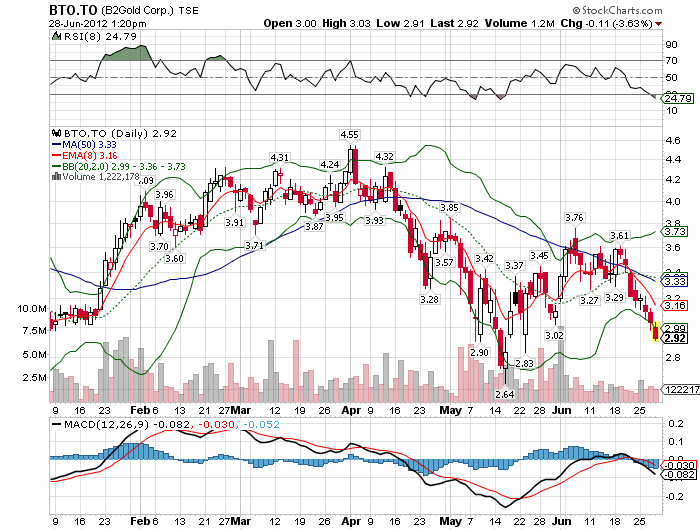What Is Quality of Life?


For example, Sarah enjoys her job and earns a salary that provides plenty of disposable income, which she uses to go on vacations and pursue a variety of hobbies. She spends her weekends volunteering in her community, working on projects around her house, or relaxing with her friends and family. When asked, Sarah might report a high quality of life because overall she feels fulfilled and happy.
This tool will be beneficial not only for therapy assessment and approval but also for establishing the natural history of the disease in terms of QoL. In turn, it will provide insights on best practices for applying the same methodology to other CDGs. That is why CDG & Allies are working towards a creative and tailored solution for the CDG community, promoting the engagement of all expert stakeholders, including CDG families, medical professionals, and pharma representatives. Given the current state and importance of QoL knowledge in the CDG field, the CDG & Allies international research network has been making significant contributions. If you feel your quality of life lacks in some areas, taking stock of how you define a good quality of life is an excellent first step towards improvement.
- Canada and many Scandinavian countries rank high for the quality of life for its citizens.
- Fulfilling essential needs, such as access to healthy food, safe housing, and health care, is a crucial first step to improving someone’s quality of life.
- Quality of life is discussed in various fields of study, including psychology, international development, economics, and healthcare.
- Different jobs may require workers to perform under extreme exertion such as heavy lifting or repetitive labor that can tax the body over time, possibly leading to long-term physical impairments.
Leaks, poor ventilation, unsteady infrastructure, and other types of disrepair can put people’s health and safety at risk, also contributing to decreased quality of life. Day-Reconstruction Method was another way of measuring happiness, in which researchers asked their subjects to recall various things they did on the previous day and describe their mood during each activity. Being simple and approachable, this method required memory and the experiments have confirmed that the answers that people give are similar to those who repeatedly recalled each subject. The method eventually declined as it called for more effort and thoughtful responses, which often included interpretations and outcomes that do not occur to people who are asked to record every action in their daily lives. However, CDG complexity and heterogeneity makes them a unique set of diseases.
While there are numerous ways of thinking about quality of life, for this article, we will focus predominantly on how the concept is relevant to you and your well-being. To this end, we will focus mostly on subjective measures, as well as health-related quality of life , which excludes non-health aspects of quality of life, such as economic and political circumstances. The main reason for this is that you likely have more control over your health-related quality of life than your country’s economic and political situation. Experience sampling studies show substantial between-person variability in within-person associations between somatic symptoms and quality of life.
One survey ranked Canada as the country with the highest quality of life in 2021 due to its good job market, political stability, and public education system. One way of thinking about quality of life that may help you assess your own is the extent to which you have the choice to live the kind of life that you want. A. Cohen, have advocated for a quality of life theory based on “functionings” or “capabilities” – various aspects of an individual’s life that afford them the freedom to live a life that they choose (Nussbaum & Sen, 1993). The following factors are examples of aspects that help cultivate an individual’s freedom in life. Without some or all of these and similar factors, an individual is limited in a way, with less choice about how they can live their life.
HRQOL Concepts
Quality of life is discussed in various fields of study, including psychology, international development, economics, and healthcare. The term can refer to different constructs depending on the context in which it is used. For this reason, and possibly frustratingly, there is no single widely agreed-upon definition of quality of life. Currently, there are no disease-specific QoL PROMs/ObsROMs for PMM2-CDG which is a gap in the drug approval process.
Improving quality of life involves action not only by NGOs but also by governments. Global health has the potential to achieve greater political presence if governments were to incorporate aspects of human security into foreign policy. Stressing individuals’ basic rights to health, food, shelter, and freedom addresses prominent inter-sectoral problems negatively impacting today’s society and may lead to greater action and resources. Integration of global health concerns into foreign policy may be hampered by approaches that are shaped by the overarching roles of defense and diplomacy. Organisations such as the World Bank, for example, declare a goal of “working for a world free of poverty”, with poverty defined as a lack of basic human needs, such as food, water, shelter, freedom, access to education, healthcare, or employment.
This can be due to their chronic nature, complexity, severity and even the lack of treatments. It is possible to save money on housing by living farther away from popular job centers and commuting to work. However, commuters do not have as much time to spend with family or hobbies because of the extra time spent sitting in traffic or using mass transit. Research has also shown that good financial management behaviors—cash management, saving, and investing—can be correlated with increased overall life satisfaction. Strong financial savvy can also promote healthy relationships between partners. Being forced to relocate often, live in overcrowded housing, or become homeless can take a toll on people’s mental and physical well-being.

One’s overall health and well-being were deemed to involve more than just efficient biological functioning, which had implications both for treatment design and measurements of population health (Karimi & Brazier, 2016). Other organizations, however, may also work towards improved global quality of life using a slightly different definition and substantially different methods. Many NGOs do not focus at all on reducing poverty on a national or international scale, but rather attempt to improve the quality of life for individuals or communities. One example would be sponsorship programs that provide material aid for specific individuals. Although many organizations of this type may still talk about fighting poverty, the methods are significantly different.
Individuals’ quality of life will still be influenced by factors not captured here, such as resilience and interpersonal relationships. As we have seen, there are numerous ways to measure quality of life, reflecting the numerous ways people conceptualize what quality of life is. There are countless lists of the best countries to live in that differ depending on which index is used and which dimensions of a country’s quality of life are assessed and incorporated.
Analysis of HRQOL surveillance data can identify subgroups with relatively poor perceived health and help to guide interventions to improve their situations and avert more serious consequences. Someone struggling with financial insecurity or health issues will face different challenges and opportunities than someone whose main concern may be establishing better work-life balance. When work consumes too much of your time, it leaves less time for family and leisure activities—common outlets for joy, fulfillment, and rest.
What is The Quality of Life Index?
Such divergences between the perceptions of those in a given health state and the perceptions of outside observers highlight the limitations of basing assessments purely on observers’ assessments. The main purpose of the health care system is to increase the well-being of those it treats. This can be achieved only if patient views are incorporated into treatment evaluations, thereby ensuring that health and medical care are fully evidence-based. The World Happiness Report is a landmark survey on the state of global happiness. It ranks 156 countries by their happiness levels, reflecting growing global interest in using happiness and substantial well-being as an indicator of the quality of human development. Its growing purpose has allowed governments, communities and organizations to use appropriate data to record happiness in order to enable policies to provide better lives.

The patient’s view of his or her own health had long played some role in medical consultation; however, in terms of the health care literature, researchers did not begin collecting and reporting such data systematically until the 1960s. Quality of life has been deemed an important concept in the field of international development because it allows development to be analyzed on a measure that is generally accepted as more comprehensive than standard of living. Within development theory, however, there are varying ideas concerning what constitutes desirable change for a particular society. The different ways that quality of life is defined by institutions, therefore, shape how these organizations work for its improvement as a whole. Quality of life is a highly subjective measure of happiness that is an essential component of many financial decisions. Factors that play a role in the quality of life vary according to personal preferences, but they often include financial security, job satisfaction, family life, health, and safety.
quality of life
Although health is one of the important domains of overall quality of life, there are other domains as well—for instance, jobs, housing, schools, the neighborhood. Aspects of culture, values, and spirituality are also key domains of overall quality of life that add to the complexity of its measurement. Nevertheless, researchers have developed useful techniques that have quality of life definition helped to conceptualize and measure these multiple domains and how they relate to each other. Academic interest in quality of life grew after World War II, when there was increasing awareness and recognition of social inequalities. This provided the impetus for social indicators research and subsequently for research on subjective well-being and quality of life.
What is health-related quality of life (HrQoL) and why is it important?
PROMs – Patient reported outcome measures – PROMs are tools used to collect patient-reported outcomes directly collected from patients/people living with a disease. Some primary indicators of quality of life include income and job, housing, education, life-work balance, interpersonal relationships, infrastructure and services, and access to cultural and leisure activities. When a household’s income is not sufficient to cover basic necessities like safe housing, healthy food, and child care, families must consider difficult trade-offs that can affect their quality of life. Quality of life refers to how an individual feels about their current station in life. It includes their perception of their overall well-being, as well as goals, expectations, and concerns. Multiple factors play into someone’s quality of life, such as their levels of job satisfaction, wealth, income, and leisure time.
While there is probably room for improvement in multiple domains, don’t overwhelm yourself – choose one or two domains that you feel will have the biggest impact. WHO defines Quality of Life as an individual’s perception of their position in life in the context of the culture and value systems in which they live and in relation to their goals, expectations, standards and concerns. Experts recommend adequate sleep to improve the quality of life and better control mood and energy levels. Different jobs may require workers to perform under extreme exertion such as heavy lifting or repetitive labor that can tax the body over time, possibly leading to long-term physical impairments. Some jobs can expose employees to potential hazards such as harmful chemicals, heavy machinery, and high risks of falling or another injury. The possibility for harm that could affect their enjoyment of life is weighed against earning a higher salary provided by an unpleasant job to provide the type of lifestyle the worker desires for themselves and their family members.
The World Happiness report, issued by Columbia University is a meta-analysis of happiness globally and provides an overview of countries and grassroots activists using GNH. In the U.S., cities and communities are using a GNH metric at a grassroots level. The quality of life in the U.S. is lower than in most developed nations due to declines in personal safety, healthcare, and uneven access to high-quality public education. Nonfinancial methods to increase quality of life include ensuring that you have enough non-work time to rest and to engage in meaningful relationships with others. Exercise is also known to improve physical and emotional well-being in several ways.

